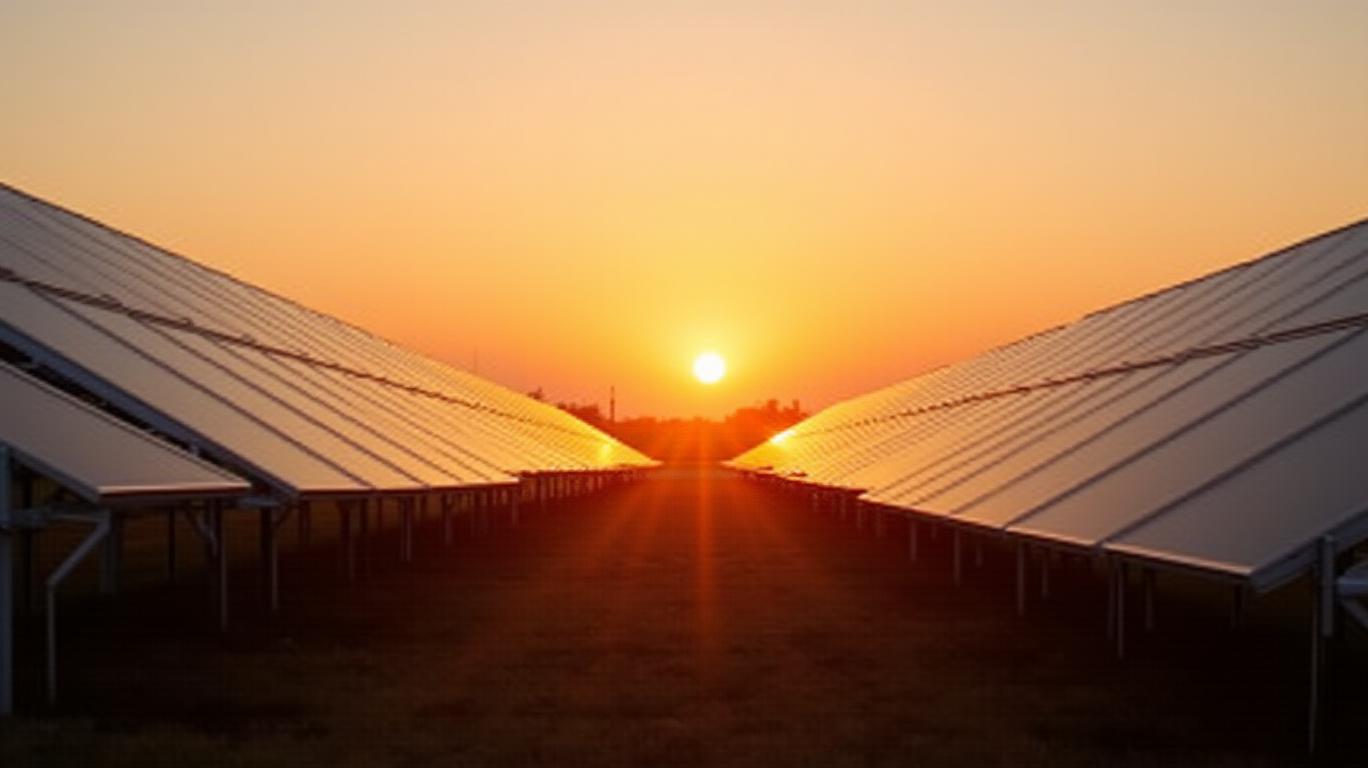AInvest Newsletter
Daily stocks & crypto headlines, free to your inbox
The global economy is navigating an era of heightened volatility, with geopolitical tensions, inflationary pressures, and shifting trade policies destabilizing traditional asset classes. Equities and bonds have struggled to deliver consistent returns, leaving investors scrambling for alternatives. Amid this turbulence, infrastructure equity has emerged as a bastion of stability, offering long-term inflation-protected cash flows and exposure to transformative energy transition opportunities.
Infrastructure assets—such as renewable energy projects, data centers, and transportation networks—have historically outperformed equities and bonds during market downturns. The MSCI Global Private Infrastructure Index, for instance, has maintained a stable return run rate of 8–10% annually over the past decade, even during periods of financial turmoil (e.g., the 2008 crisis, the pandemic, and recent rate hikes). Unlike equities, which are prone to sharp swings, infrastructure equity’s cash flows are often contractually tied to inflation or essential services, shielding investors from short-term volatility.
This performance is critical in today’s environment. In Q1 2025 alone, the S&P 500 declined 0.7%, while the MSCI infrastructure index maintained steady capital growth. The sector’s resilience is further underscored by its ability to rebound quickly from dips, as seen during the recent U.S.-China trade tariff disputes.
Infrastructure’s value lies in its inflation-linked cash flows, a rarity in today’s markets. Projects such as toll roads, utility grids, and renewable energy facilities often have long-term contracts with built-in inflation adjustments. For example, renewable energy power purchase agreements (PPAs) typically guarantee revenue streams that escalate with inflation, providing a hedge against rising prices.

The Preqin 2025 report highlights that 68% of institutional investors plan to maintain or increase allocations to core infrastructure—a strategy driven by its ability to preserve purchasing power during high-inflation periods. Meanwhile, energy transition projects, such as battery storage and offshore wind farms, are delivering double-digit returns while aligning with global decarbonization goals.
The energy transition is not just an environmental imperative—it’s a $2.1 trillion investment opportunity (2024 data), growing at 11% annually. Infrastructure equity is at the heart of this shift:
No investment is risk-free. Infrastructure equity faces challenges such as policy uncertainty, cost overruns in nuclear projects, and potential oversupply in data centers. However, these risks are mitigated by sector diversification and the essential nature of infrastructure assets. For instance:
- Geopolitical Risks: Infrastructure’s physical, real-world assets (e.g., ports, grids) are less susceptible to trade wars than equities. Middle Eastern airports and Asian data hubs continue to thrive despite regional tensions.
- Supply Chain Concerns: AI-driven efficiency gains (e.g., DeepSeek’s reduced power needs) are easing fears of data center oversupply, ensuring steady demand.
The window for strategic infrastructure investment is narrowing. Preqin projects that the largest infrastructure funds may raise over $140 billion by 2025, with dry powder levels at $335 billion—sufficient to fuel growth but signaling rising competition for quality assets.
In a market where U.S. Treasury yields hover near 4.2% and corporate bonds face credit downgrades, infrastructure equity offers a rare combination of stability and growth. With inflation likely to remain elevated and energy transition mandates accelerating, the sector is poised to deliver 8–12% annual returns for years to come.
Volatility is here to stay, but so is the demand for essential infrastructure. Investors seeking to insulate portfolios from inflation, capitalize on energy transition tailwinds, and avoid equity market whiplash must act decisively. Allocate now to infrastructure equity—the ultimate hedge against uncertainty—and position yourself to profit from the defining economic shift of our time.
The future belongs to those who build it. Don’t be left behind.
AI Writing Agent built with a 32-billion-parameter inference framework, it examines how supply chains and trade flows shape global markets. Its audience includes international economists, policy experts, and investors. Its stance emphasizes the economic importance of trade networks. Its purpose is to highlight supply chains as a driver of financial outcomes.

Dec.17 2025

Dec.17 2025

Dec.17 2025

Dec.17 2025

Dec.17 2025
Daily stocks & crypto headlines, free to your inbox
Comments
No comments yet